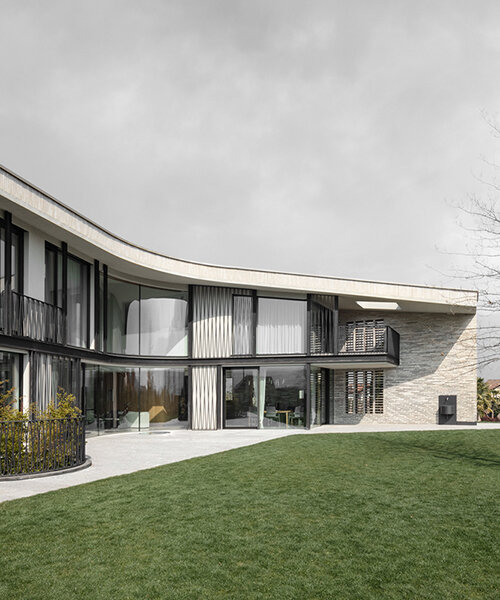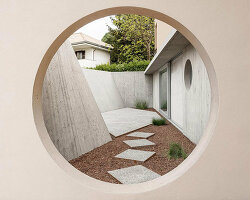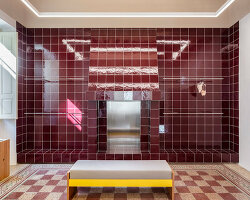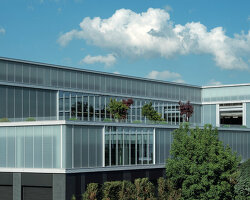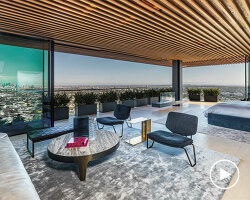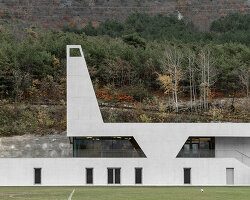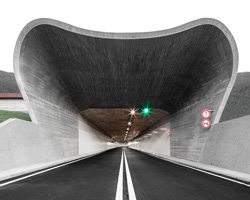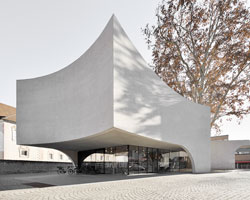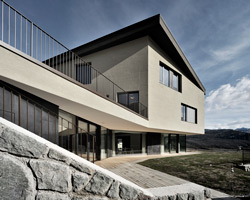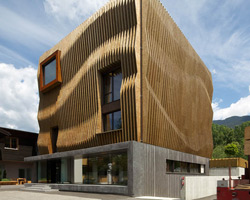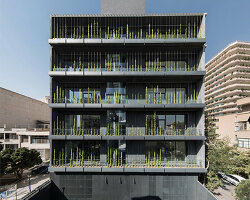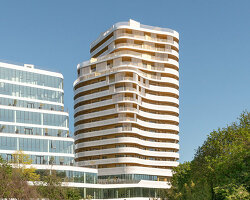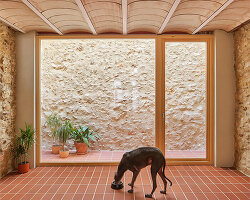MoDusArchitects builds Visibilio House in italy
On the outskirts of a small town in Italy, MoDusArchitects has recently finished a private residence that brings a contemporary twist of local tradition to the rural scenery. Named Visibilio House, the project appears as a single-family dwelling, but in reality, it is divided into two separate living units. The larger unit caters to a family of four, while the smaller one serves as a space for guests and additional family members.
Encircled by vineyards and numerous wineries, the architectural composition harmoniously blends diverse vocabularies, technologies, and textures into a unified structure crafted by numerous tradesmen and artisans. Positioned on the northern periphery of an elongated plot, replacing an existing building, the new structure emerges from a plateau, offering unobstructed vistas of the Adige Valley. Its facades are strategically oriented towards the south, opening up to a garden that fosters a direct connection with the surrounding landscape.
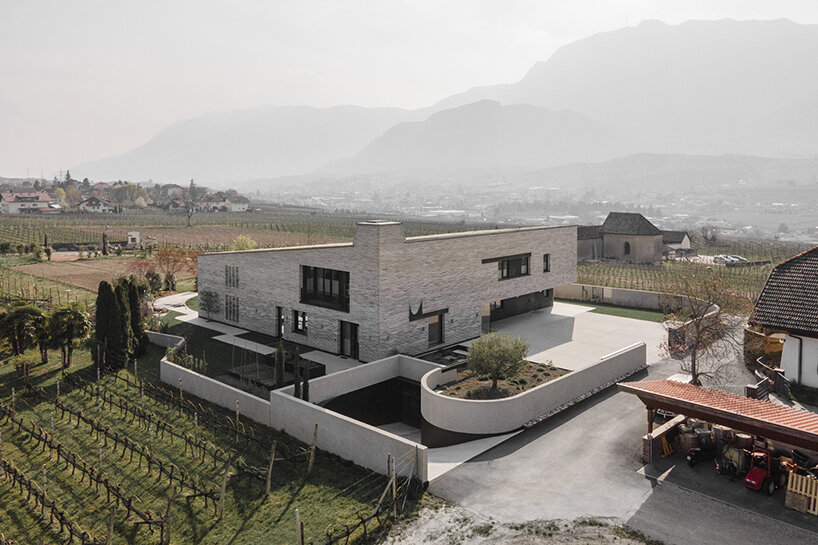
all images ©Gustav Willeit, unless stated otherwise
A Harmony of Indoor and Outdoor Spaces
For this project, MoDusArchitects (more here) explored traditional building styles and features. The dwelling showcases various features seen in vernacular architecture, including an entrance area, the distinct space between the roof and the structure, an extended roof edge, an underground wine cellar, and a wood-burning stove. The house is spread across three floors, with one below ground and two above. The living spaces offer diverse experiences that change throughout the day and across the seasons, creating a practical framework for everyday life.
Materials such as brick, terracotta, lime plaster, steel, wood, and glass form a dynamic palette that transitions from darker to lighter tones, symbolizing the connection between humans and both the earth and the sky above. Visibilio House uses handmade bricks with thick mortar joints on three sides, giving it a weathered and timeless appearance. The brickwork is used to serve as both a sunshade and a decorative band, taking inspiration from nearby granaries as well as Nordic and Italian masonry traditions. The glazed front of the house faces south to capture maximum sunlight, which is regulated during warmer months with sun-shading systems. The building is well-insulated, and the brick construction helps maintain consistent indoor temperatures throughout the year.
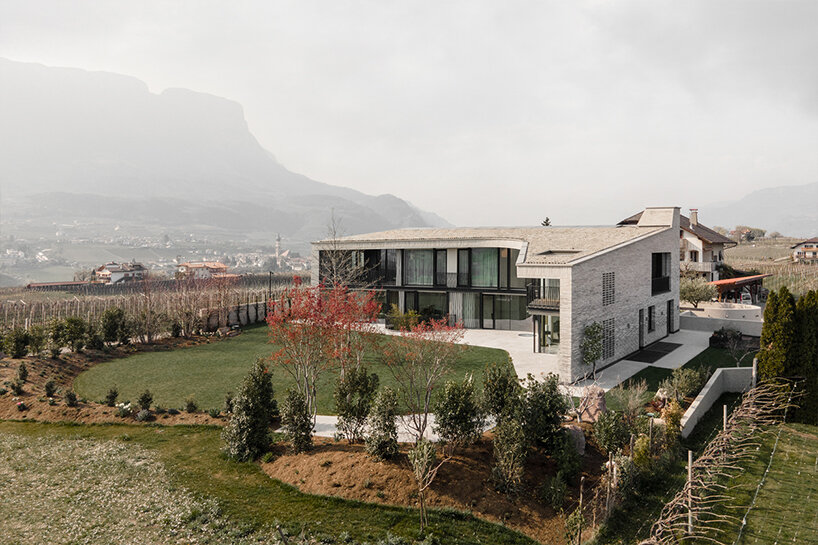
MoDusArchitects adds a vernacular twist to the hillsides of South Tyrol’s wine country
At the house’s entrance, MoDusArchitects opted for a water fountain made of steel. The structure hangs from a low concrete wall and directs the water into a shallow basin made of welded steel sheets. The steel has a worn and imperfect appearance, which is also seen in the cladding of the entrance and the doorknob. The entrance forecourt serves as a transition area between the property and the surroundings. Upon entering the main family house, there is a linear vestibule that separates the entryway from the main living spaces.
The vestibule features elmwood cabinets on one side and a staircase on the other. It provides a cozy space for arrival, complete with a bench to put on and take off shoes. The double-height living room is the central space around which other areas are arranged, such as an open kitchen and dining area with a breakfast patio to the east, a covered dining area to the south, guest quarters, a study, and a multimedia room. The kitchen features a combination of elmwood and burnished metal on its back wall. This design element connects the wood panels in the living room to the rough brick surfaces on the eastern end of the house. The kitchen’s porphyry island stands out against the brick background, serving as a focal point for cooking and food preparation.
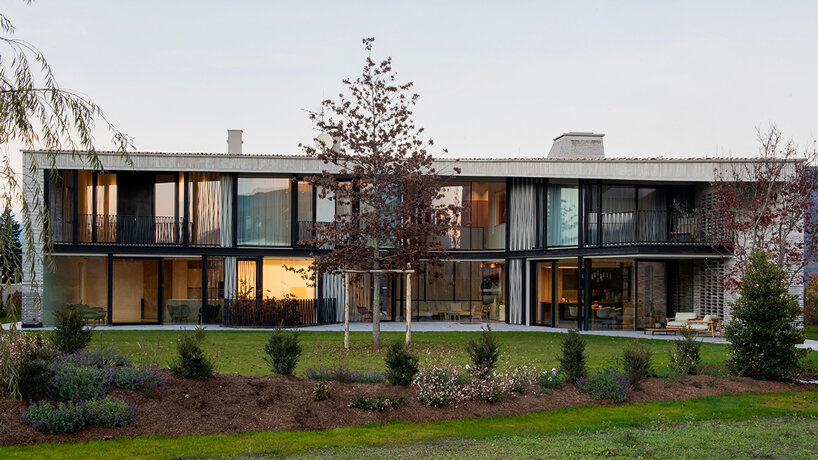
Blackened steel channels are embedded in the brick structure to create window lintels | image ©Paolo Abate
The flooring throughout the house is carefully chosen to blend local and distant traditions. Different materials such as clay pavers, traditional concrete terrazzo floors, plank hardwood, and lasa stone pavers, are used in various parts of the house. These flooring choices are echoed in the treatment of the wall surfaces, creating a harmonious visual narrative within the interiors. The lower level of the Visibilio House features square cotto tiles mixed into the thick plaster of the walls, creating a textured surface. On the ground level, the fireplace is designed to stand out, with sunlight highlighting its curvaceous shape and reflecting off the shiny aggregates. It combines the traditional ‘stube’ living space of South Tyrol with modern wood-burning stove technology, honoring its artisanal origins.
The rooms of the house are furnished with custom-made furniture that complements the tactile surfaces. The central staircase connects the three levels of the house and serves as a focal point. It features a tripartite steel frame filled with twisted rope, hand-wound by the client. The double-layered insets of the staircase create an interplay of opacity and transparency, making it both a divider and an experiential space within the house.
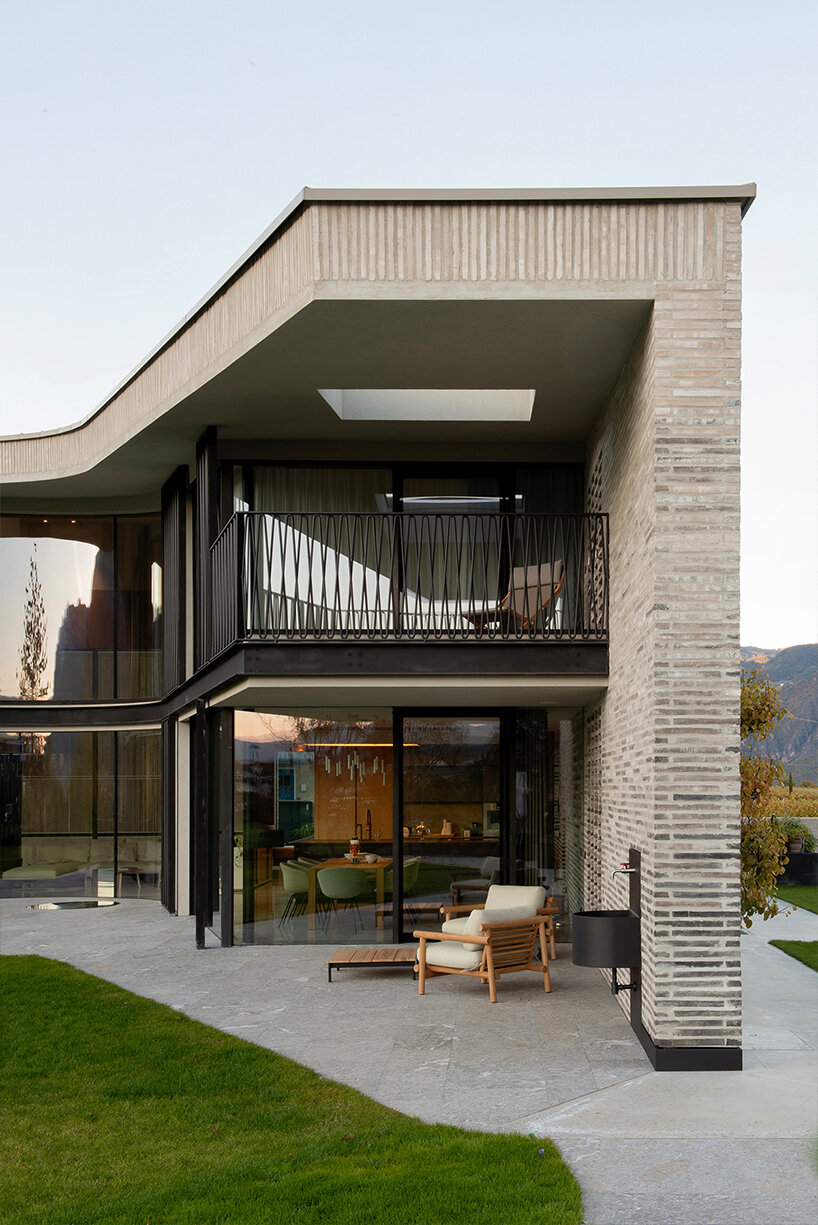
image ©Paolo Abate
visibilio house promotes Seamless Indoor-Outdoor Living
From the first-floor gallery, users can admire the view of the living room, the garden, and the outdoor spaces through the glazed wall. The gallery provides a comfortable reading nook with a cushioned alcove, offering a cozy spot to enjoy the view and relax. It connects the children’s sleeping quarters and laundry room on one side with the small library and master bedroom suite on the other. The gallery is defined by built-in elm cabinetry, and its design blends light and airy colors from the top floor with earthy materials on the lower levels.
The lowest level of the house includes an earthen entry area that leads to various spaces, such as a large garage, a workshop, a small wine cellar, a family room, and storage areas. The central stair begins at this level and brings in natural light to the underground spaces. The entryway features a top-lit exedra that creates a dramatic play of light and surfaces. In the workshop, a sunken garden provides optimal natural lighting for the client’s work as a footwear designer. It also introduces a peaceful green space, separating it from the rest of the house and creating a serene work environment. On the ground floor, the living room centers around a stone patio, the kitchen opens up to an outdoor breakfast area and a raised vegetable garden, and the indoor dining area is complemented by a covered eating porch with high ceilings. Upstairs, the bedrooms have covered balconies, and a small terrace connects the main bedroom with the library.
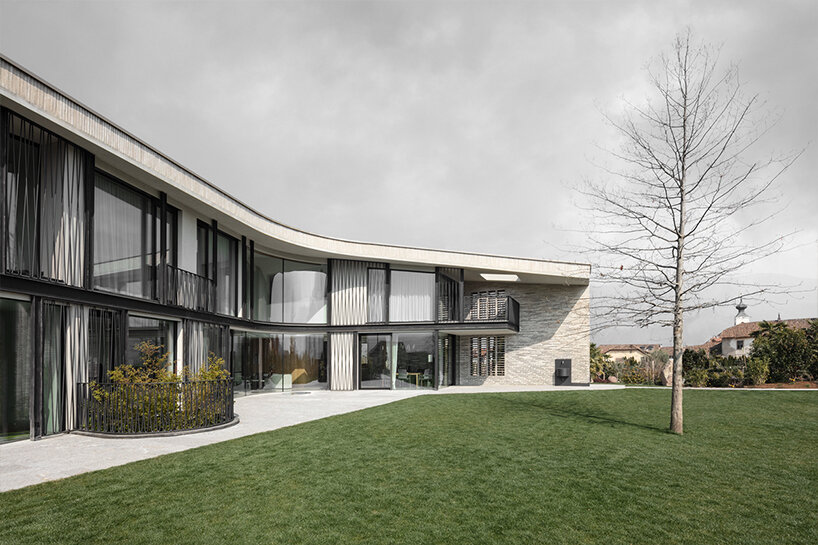
generous amount of openings let natural light flood the interior
sustainable Design and Eco-Conscious Solutions
Visibilio House carefully considers sun and wind exposure to create different indoor and outdoor spaces. It incorporates ecological solutions to promote sustainability and align with the overall design. The house features photovoltaic panels for renewable energy, radiant floor and ceiling heating and cooling systems, and a controlled ventilation system. Rainwater is collected and used for irrigation, supporting a mix of landscaping styles including a wild meadow and a formal garden. The house by MoDusArchitects has achieved CasaClima Gold Nature certification, indicating high energy efficiency with a low carbon footprint. This certification also ensures the use of environmentally friendly materials and systems, prioritizing the comfort and health of the indoor environment.
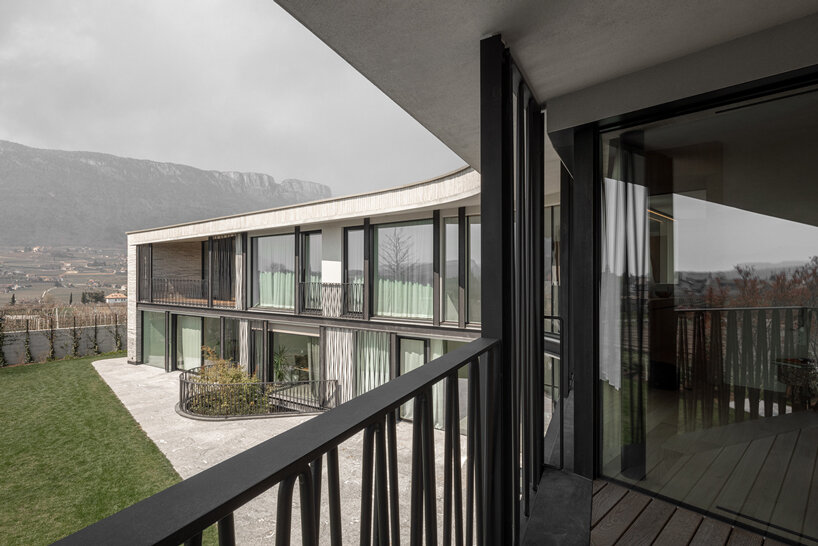
the rooms enjoy unobstructed vistas of the Adige Valley
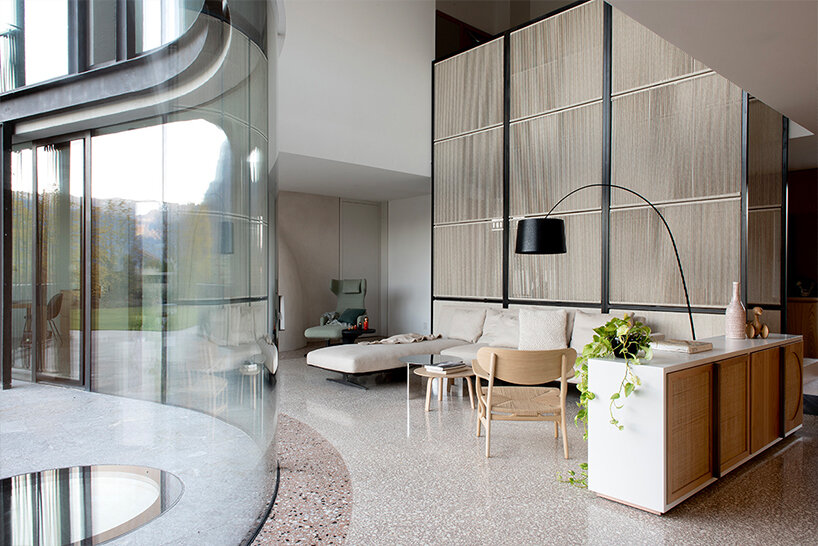
through the curved glazed wall, users can admire the garden, and the outdoor spaces | image ©Paolo Abate
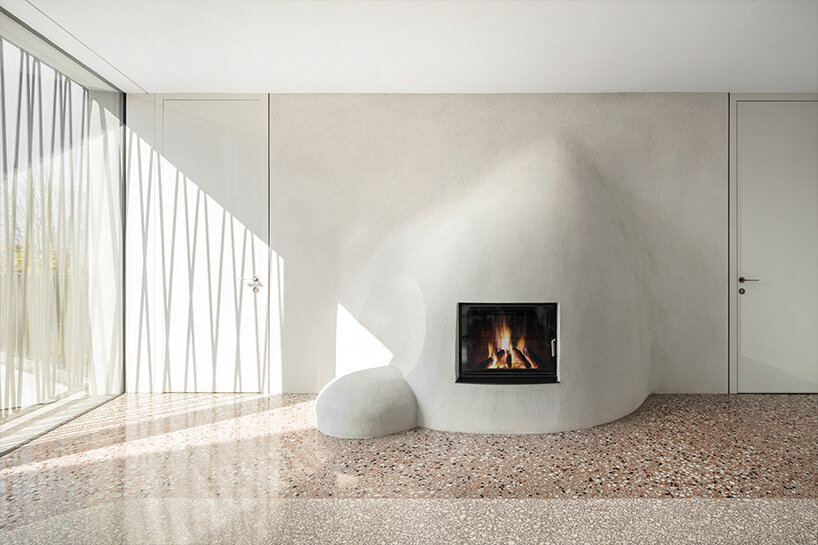
the fireplace is designed to stand out, with sunlight highlighting its curvaceous shape
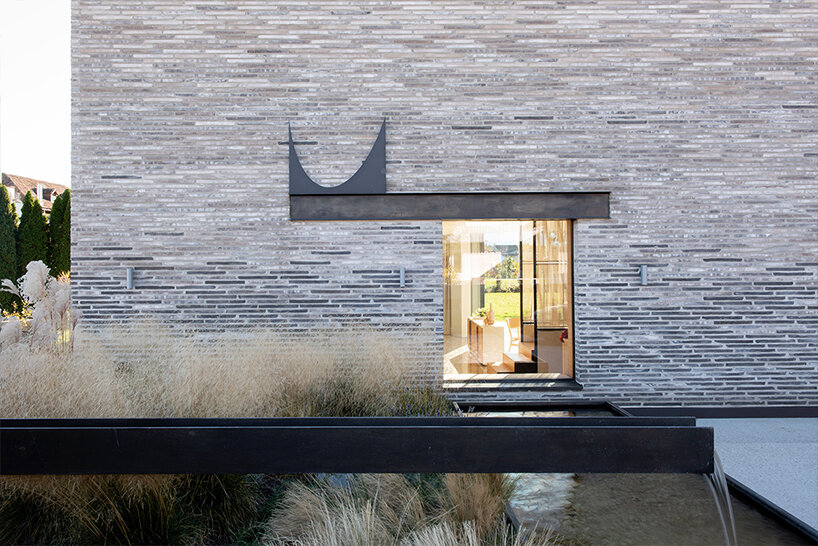
at the entrance of the house, there is a water fountain made of steel | image ©Paolo Abate
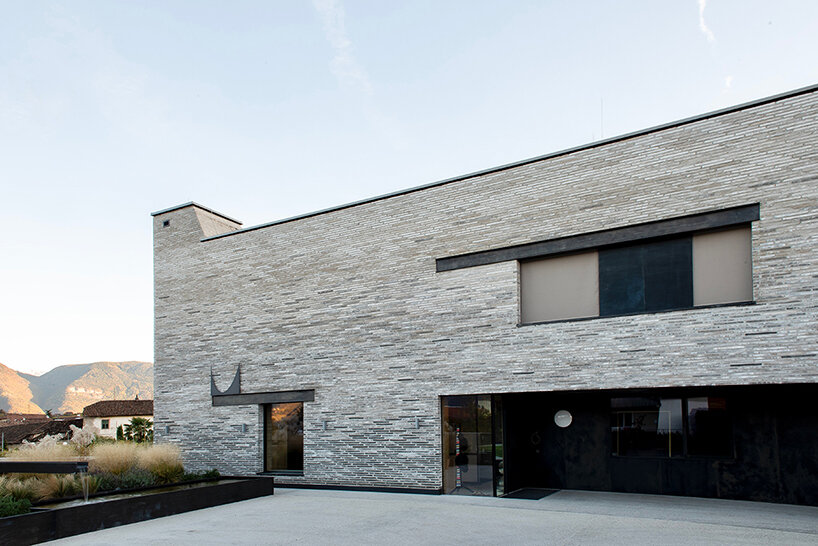
the bricks are arranged in a way that creates a textured surface, transitioning from dark grey tones at the bottom to lighter sandy tones at the top | image ©Paolo Abate
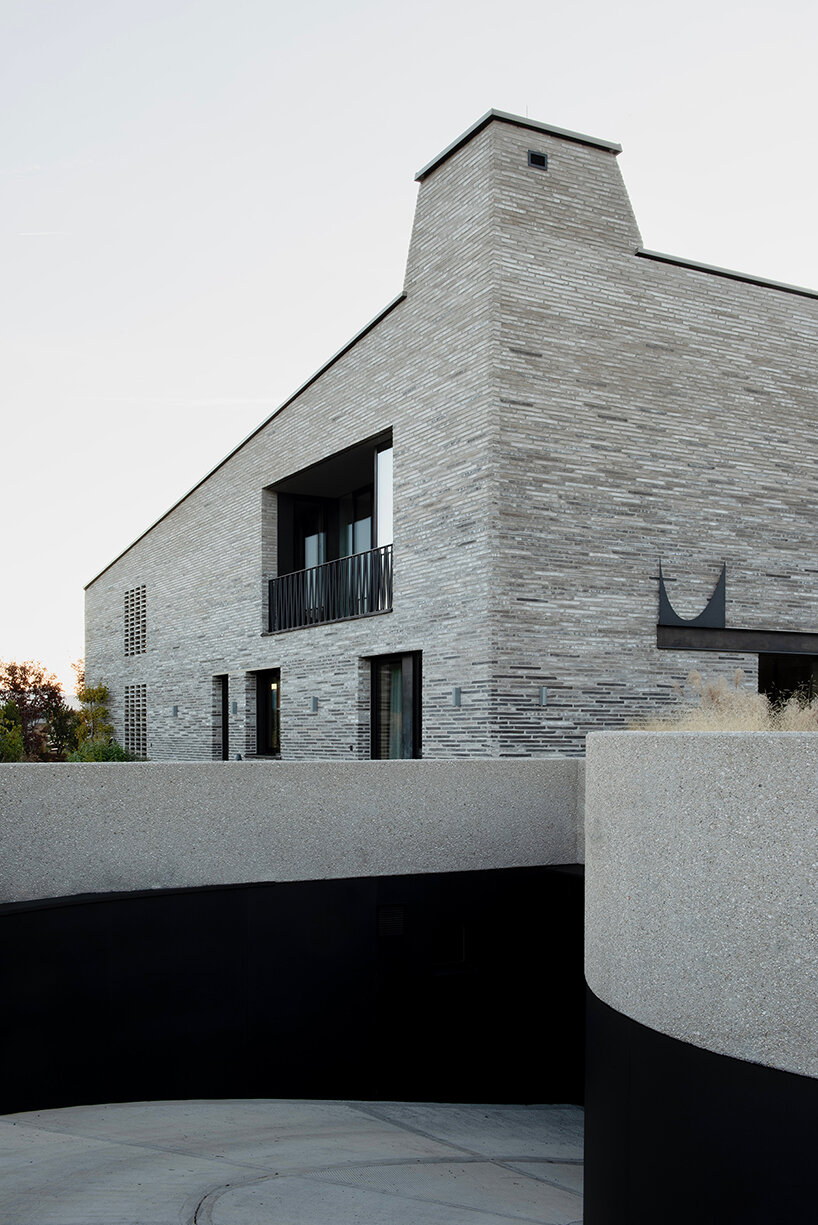
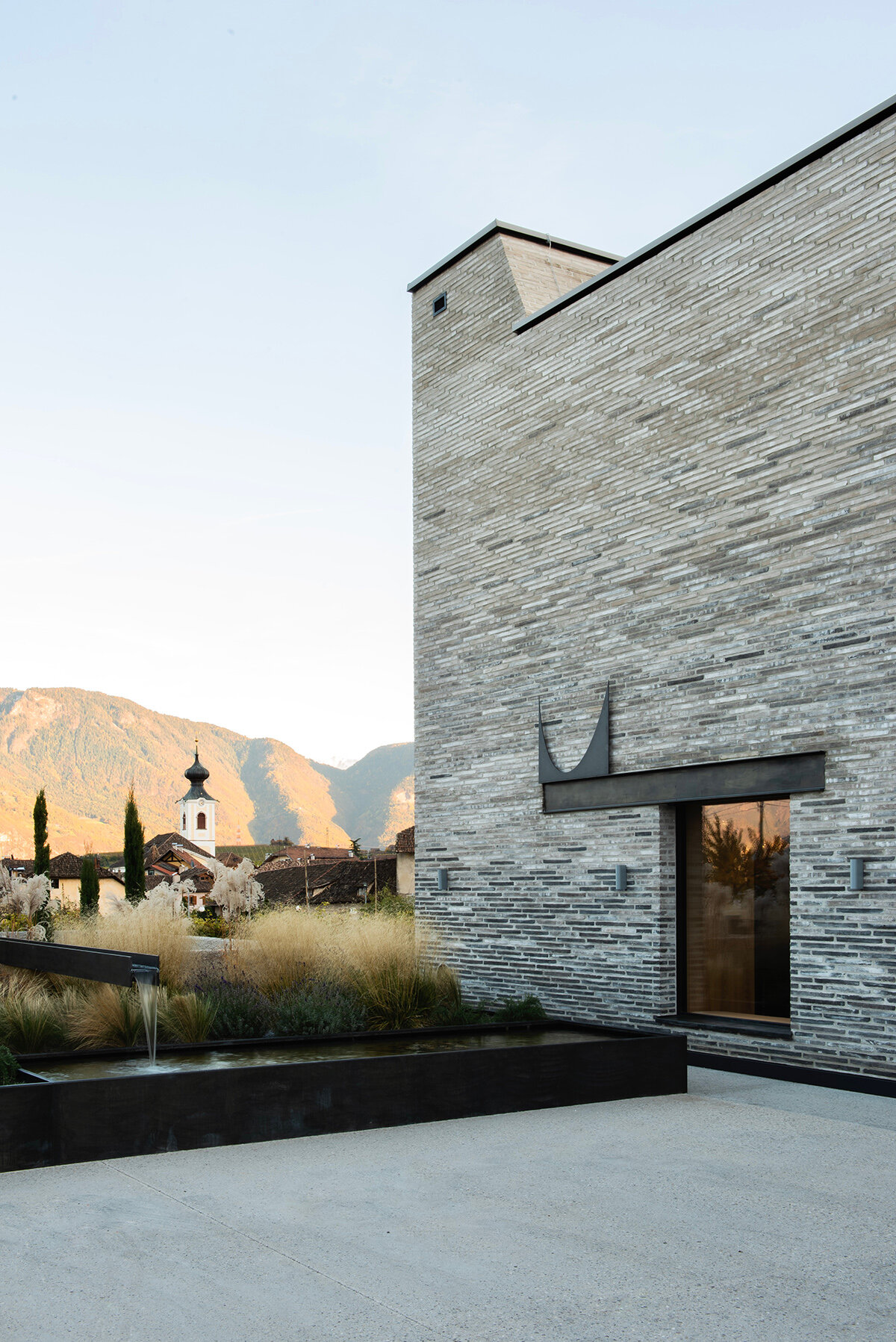
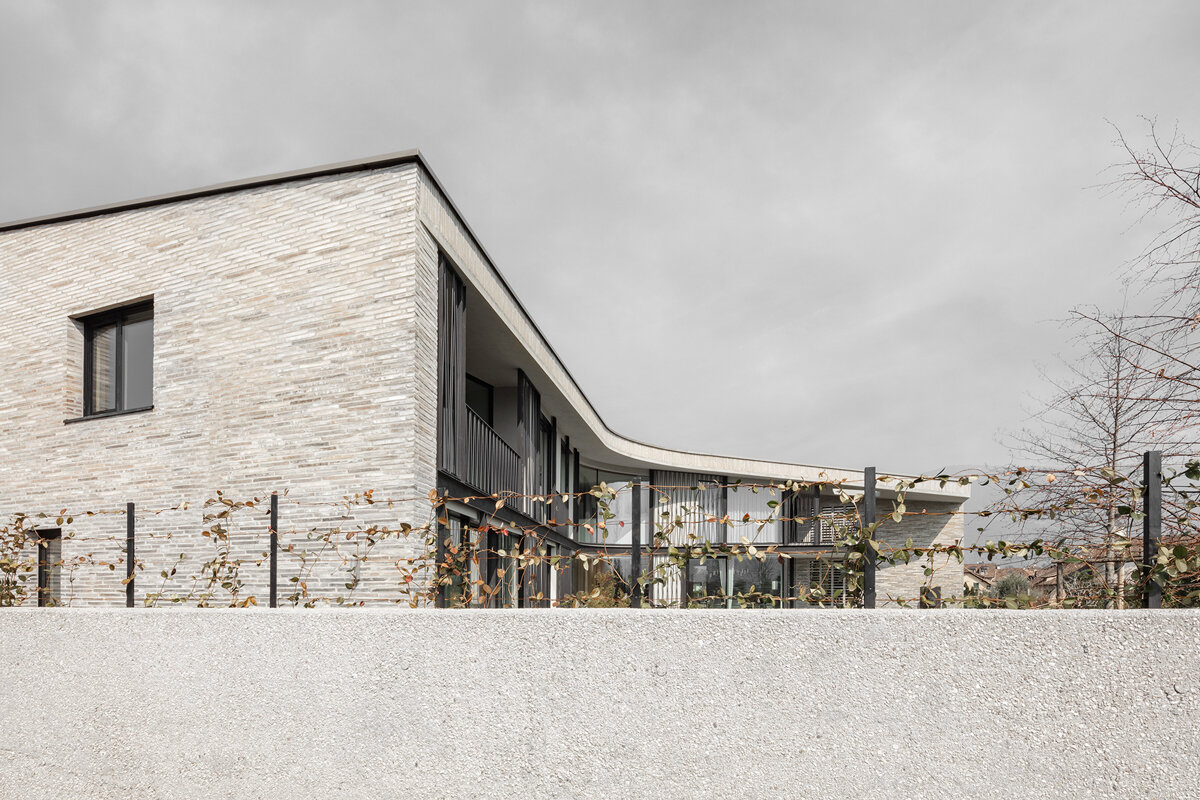
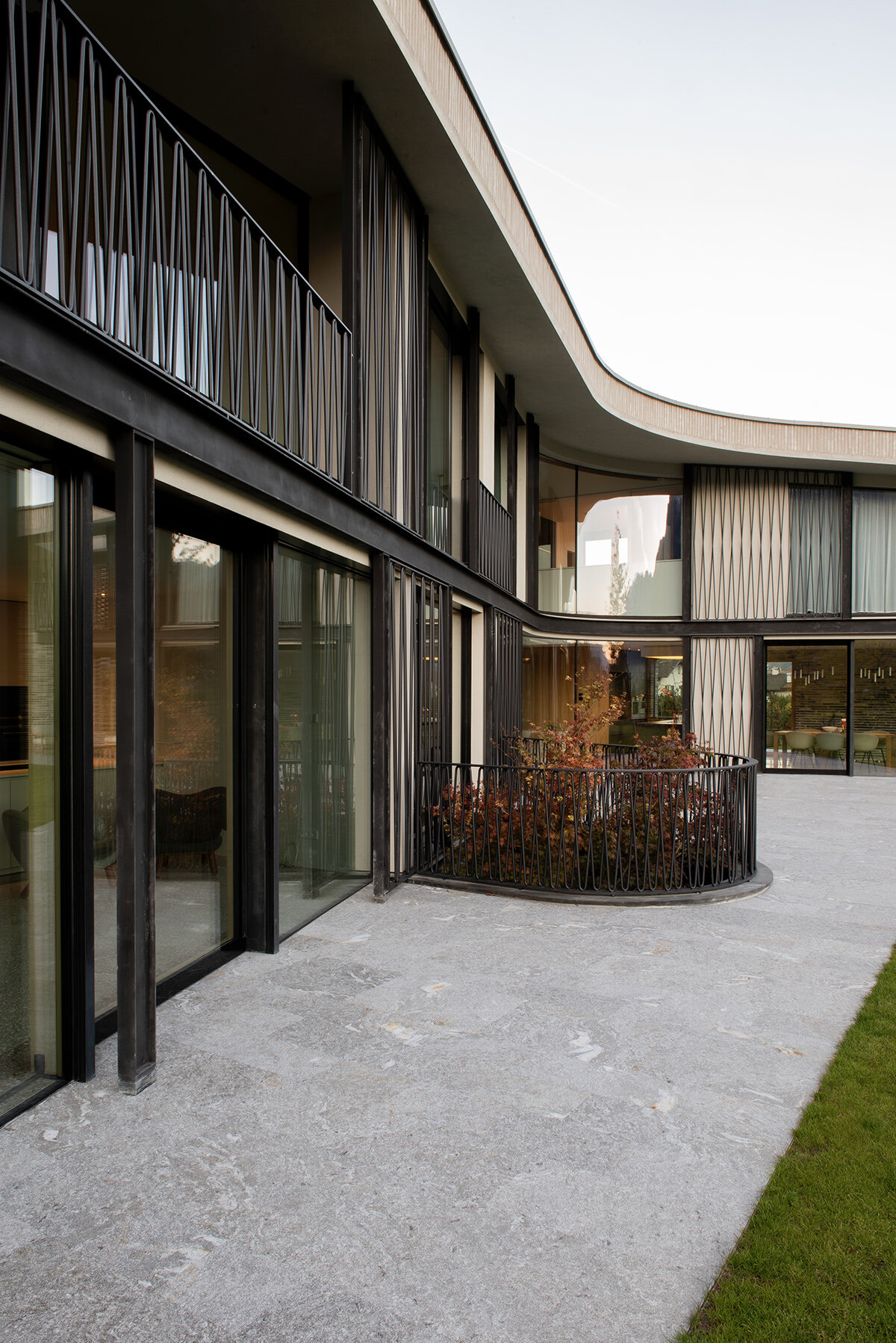
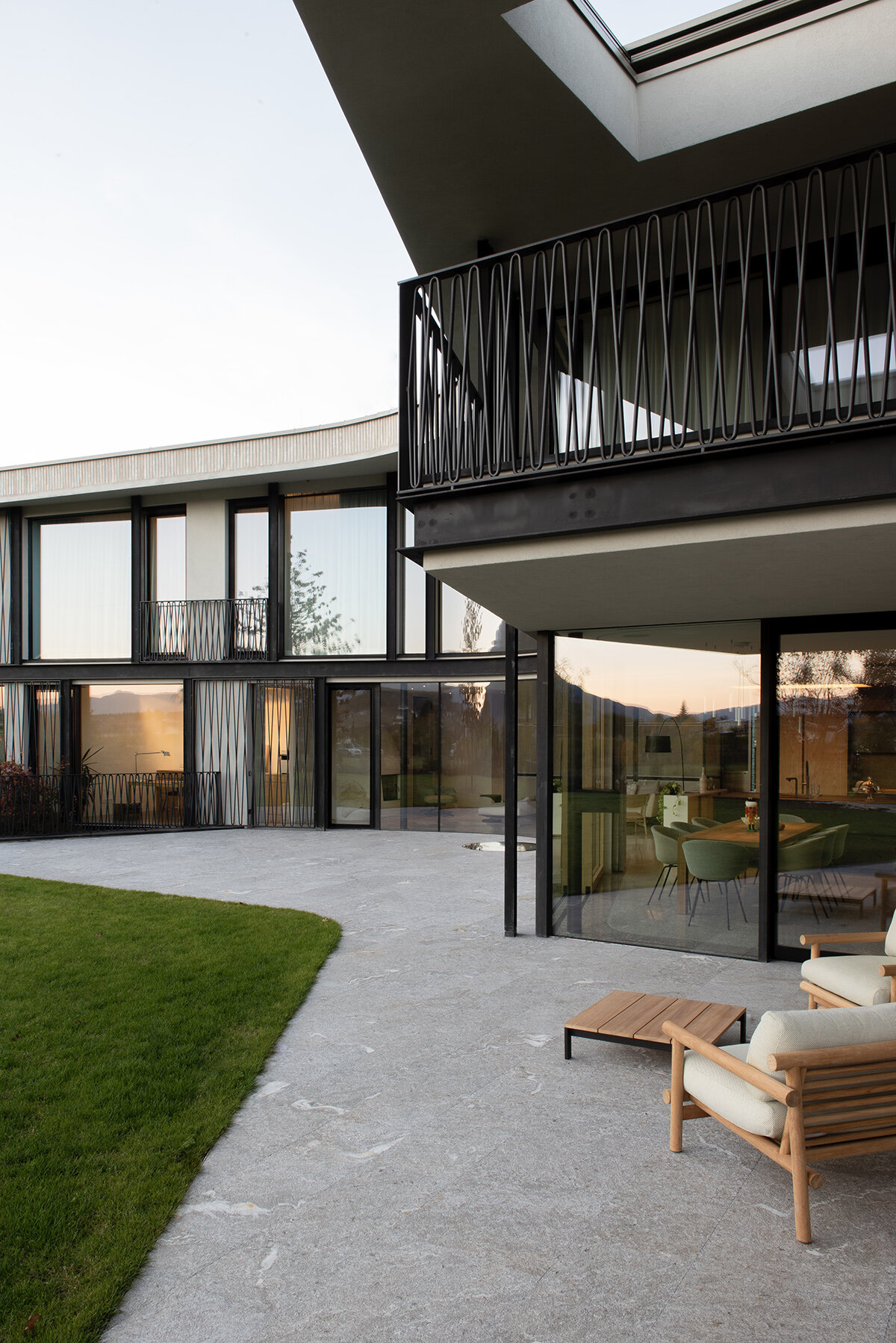
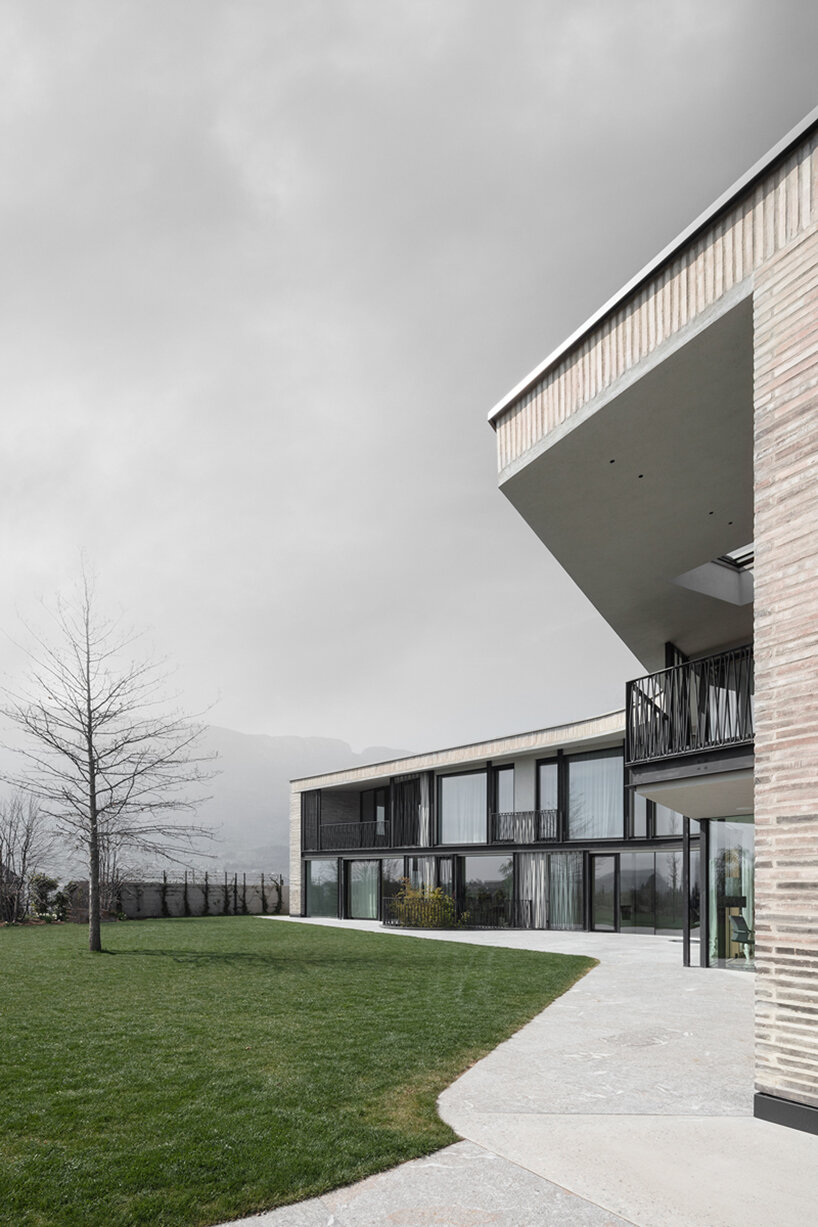
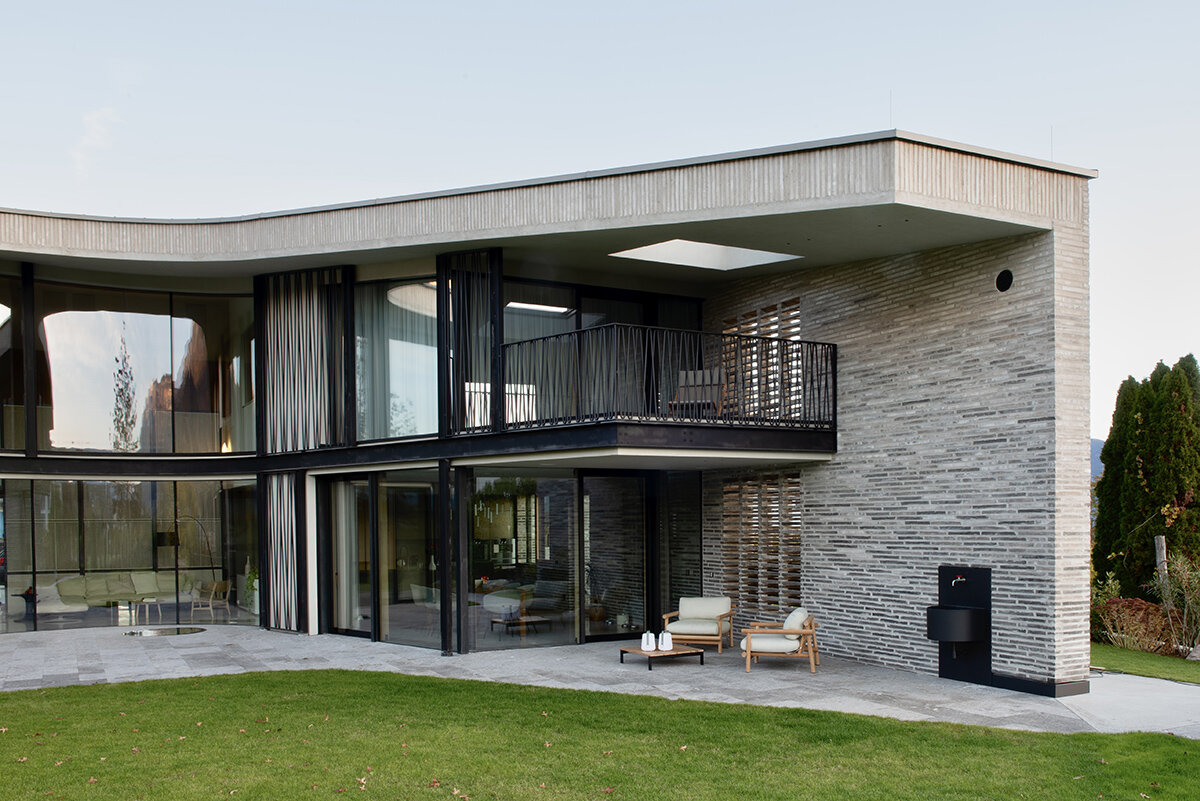
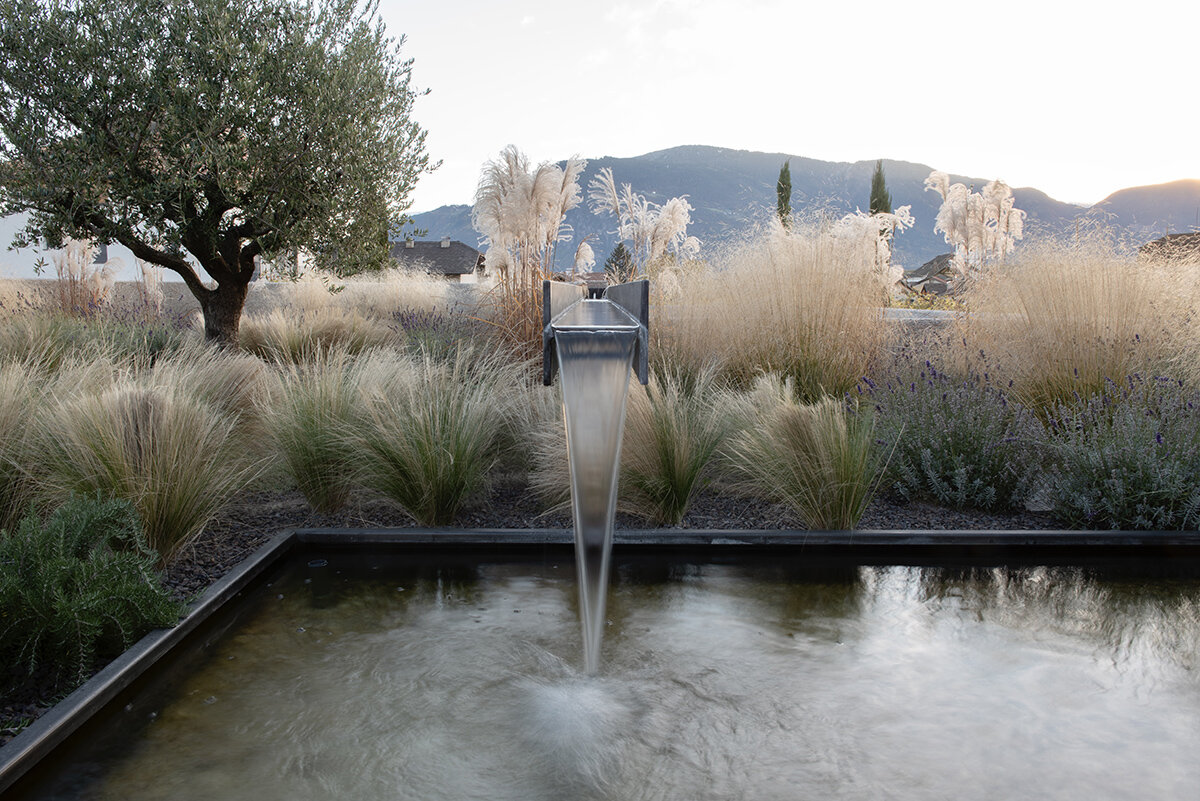
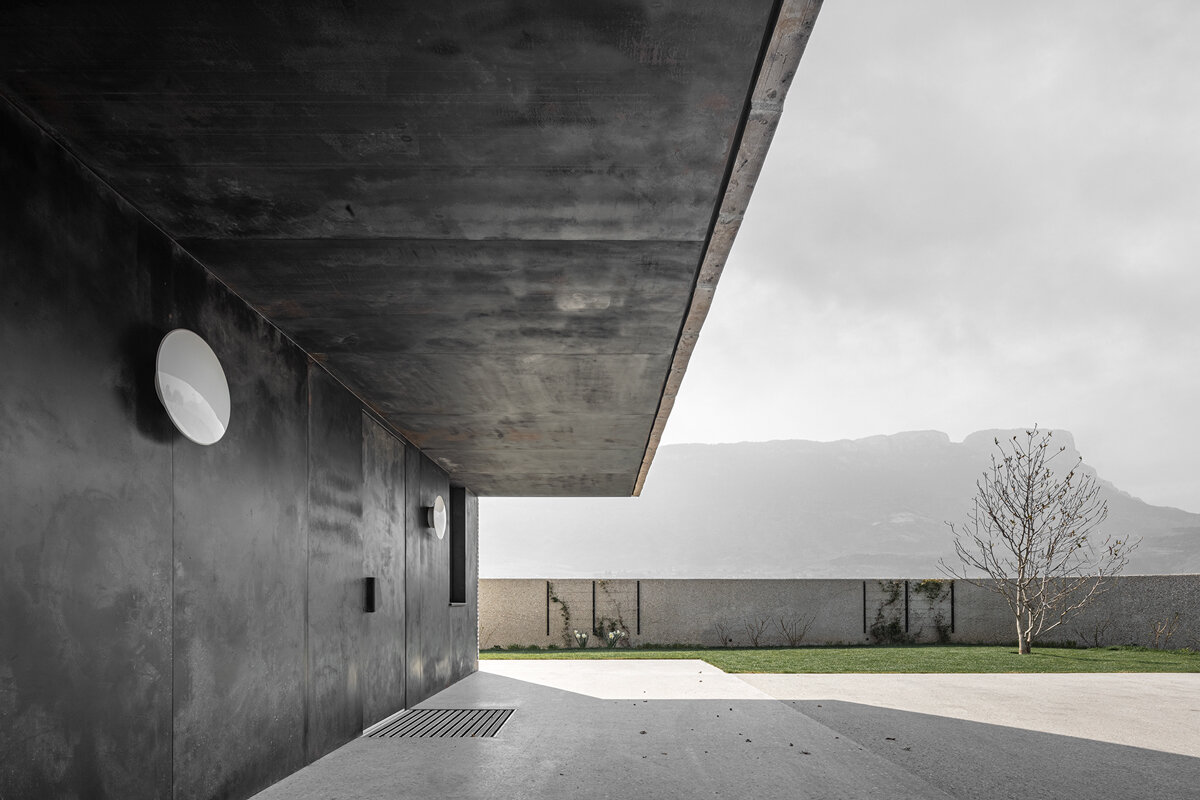
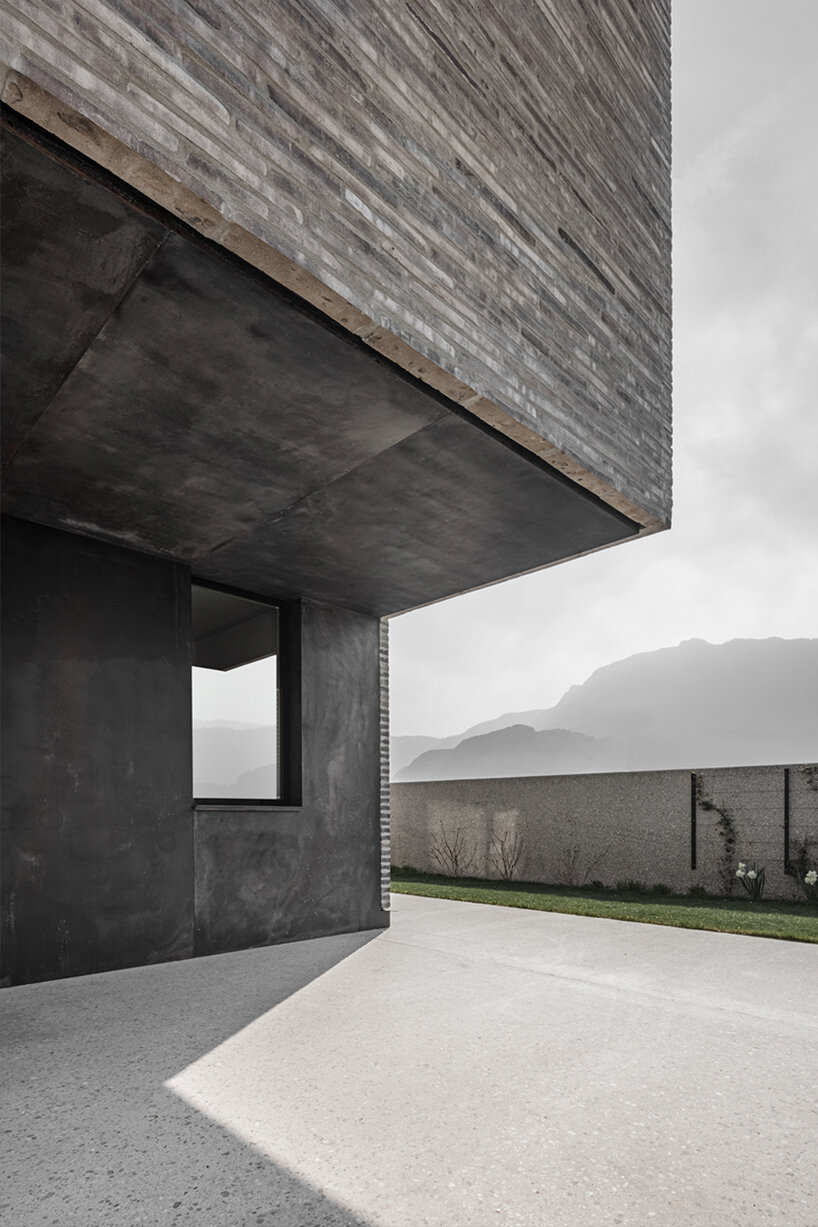
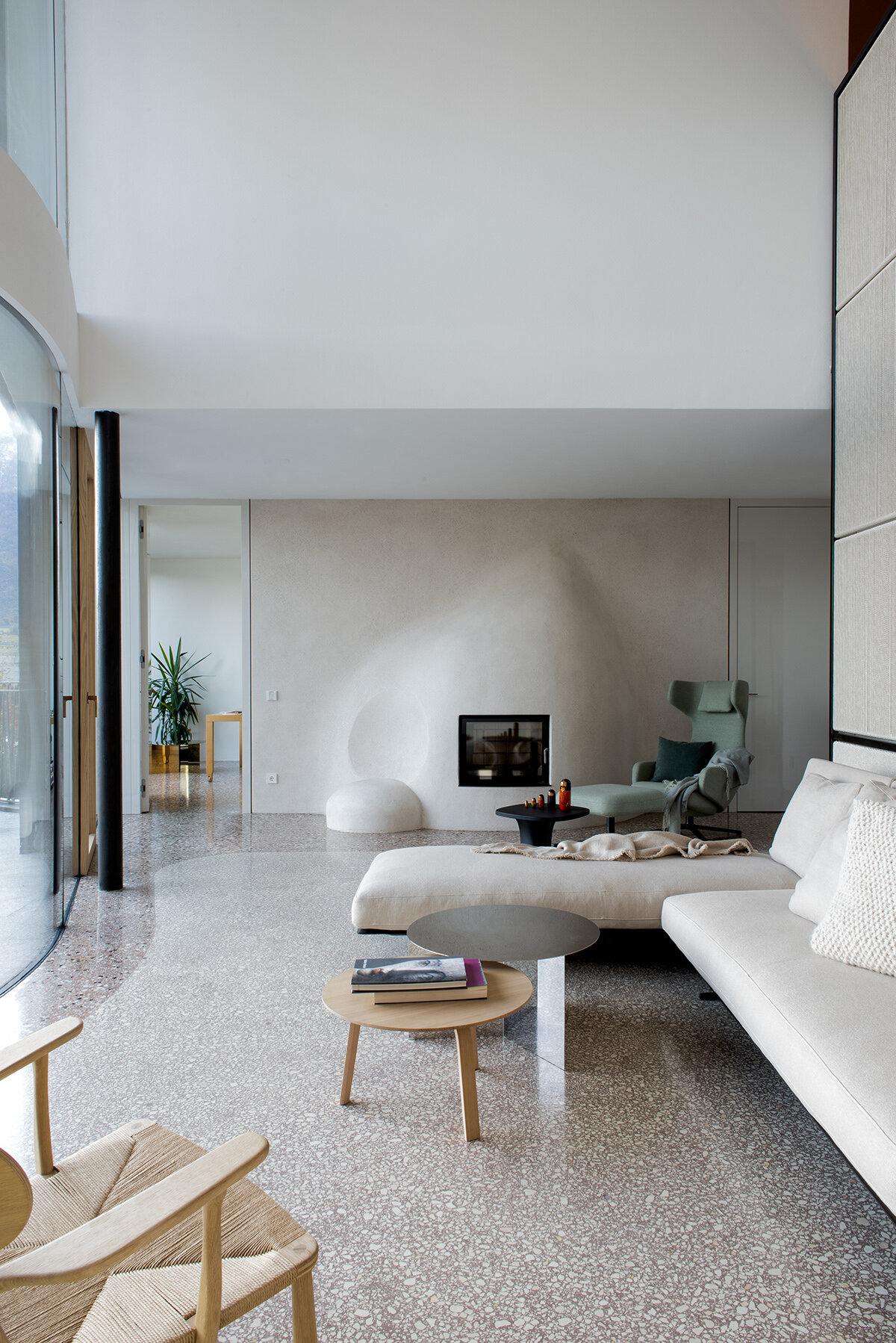
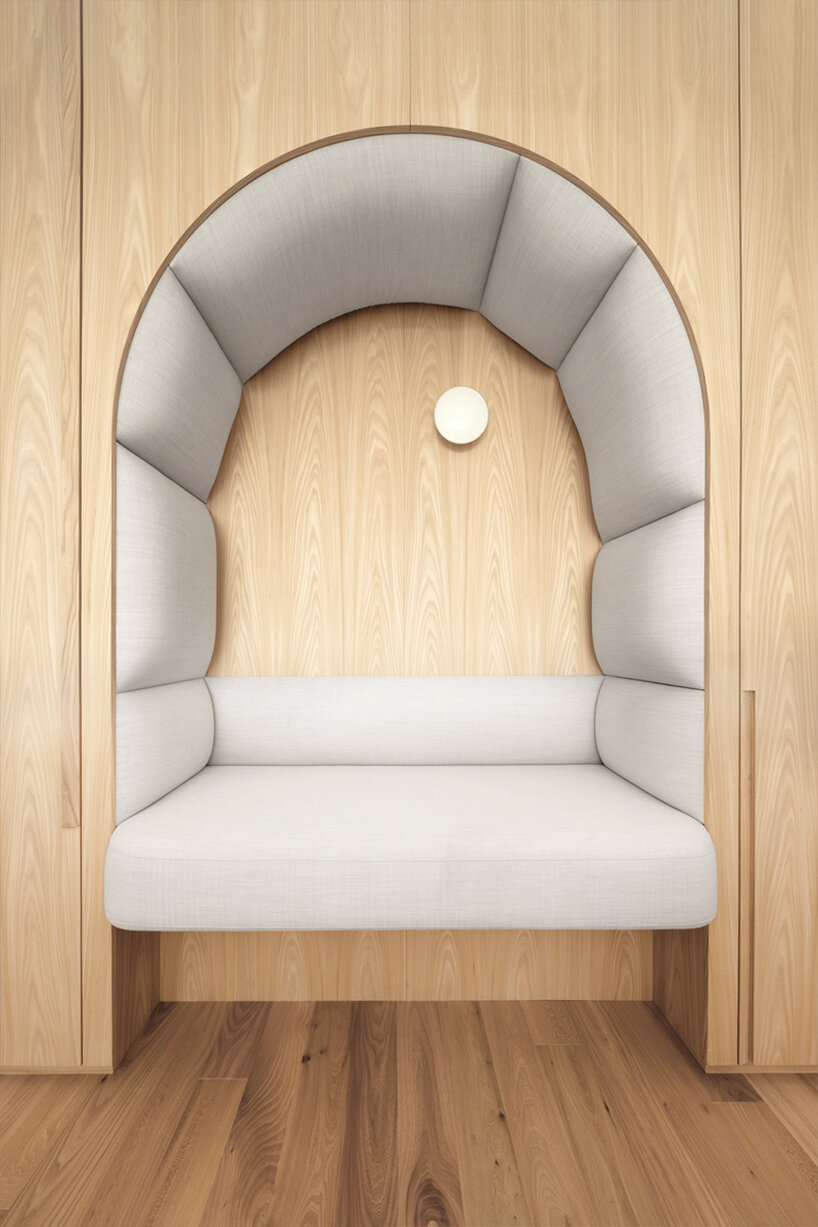
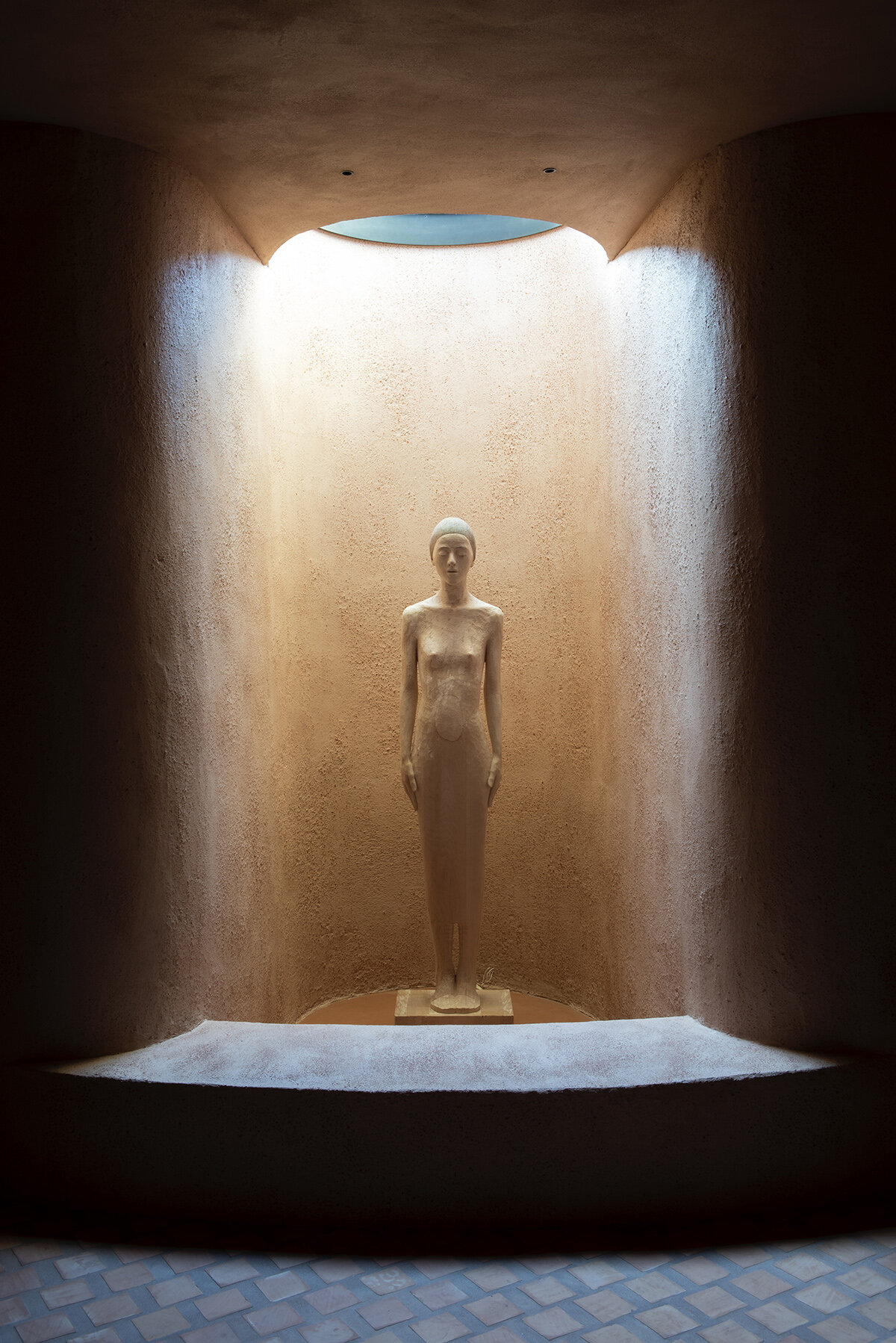
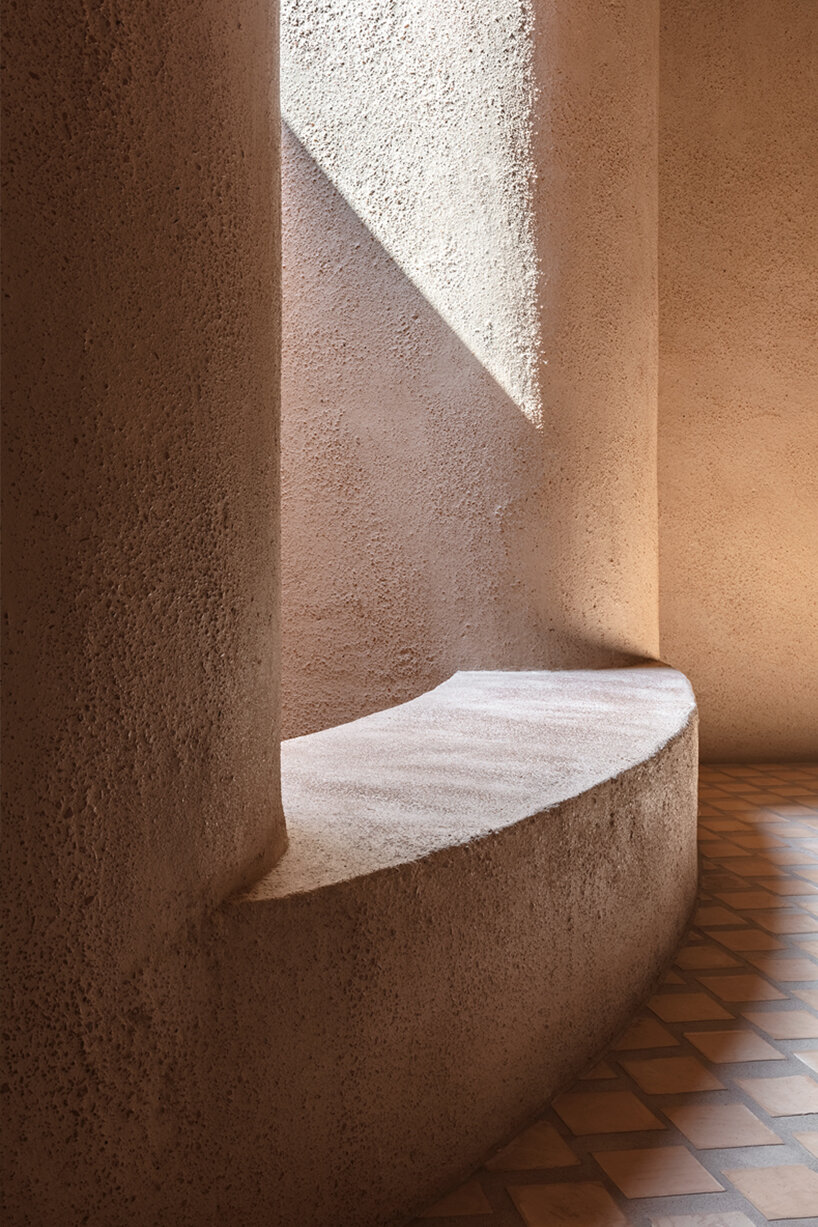
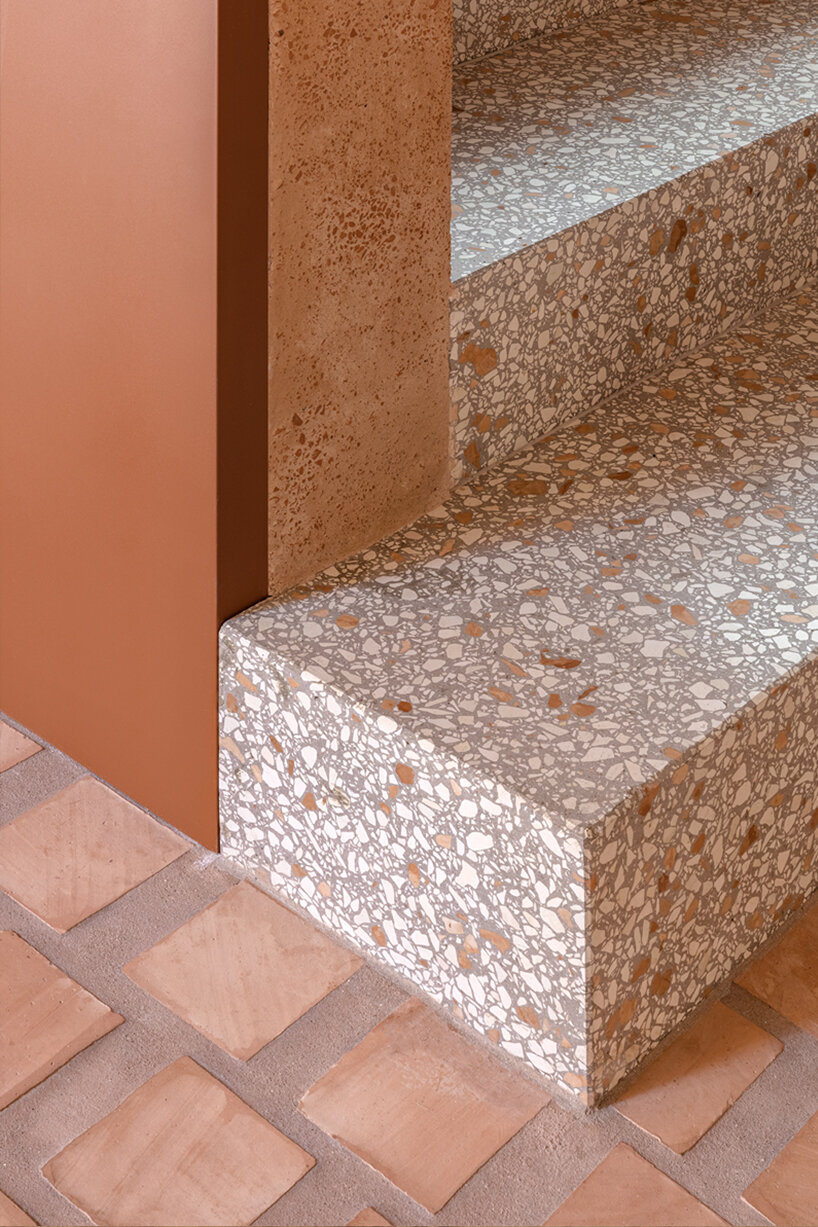
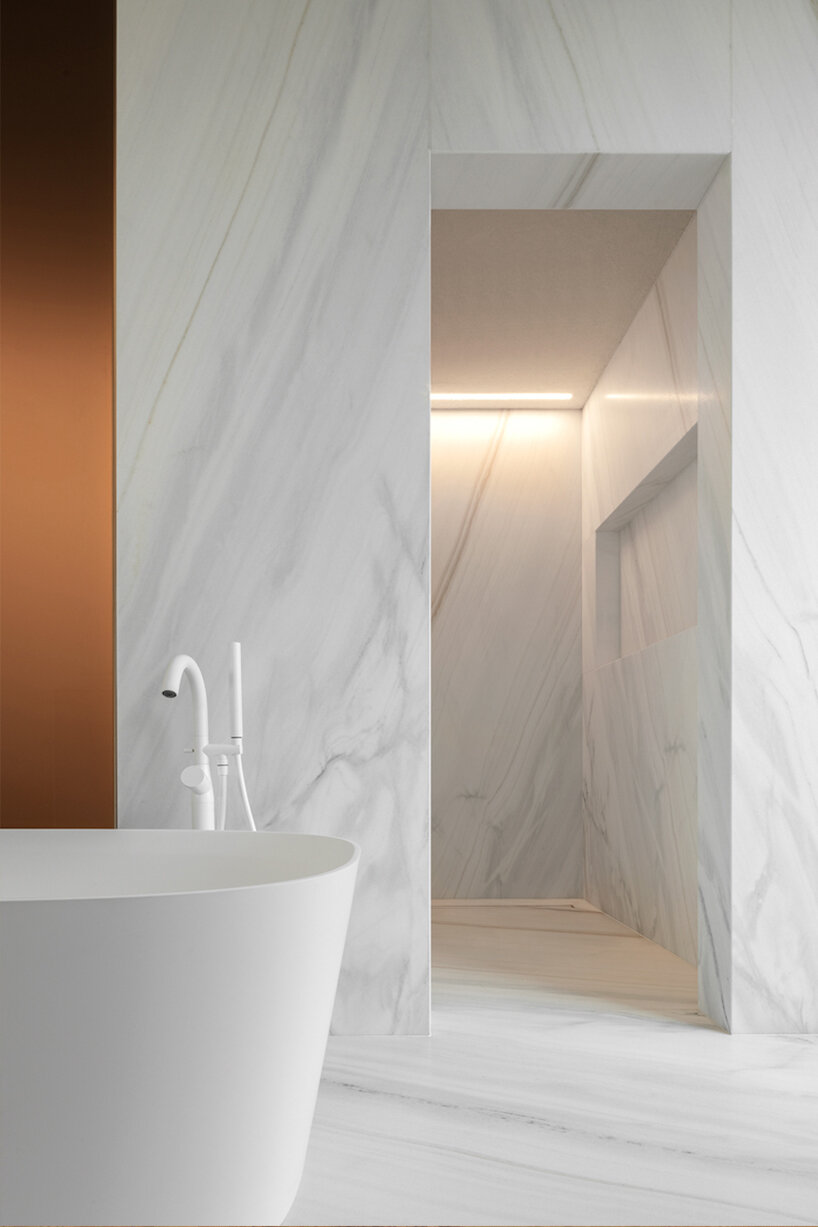
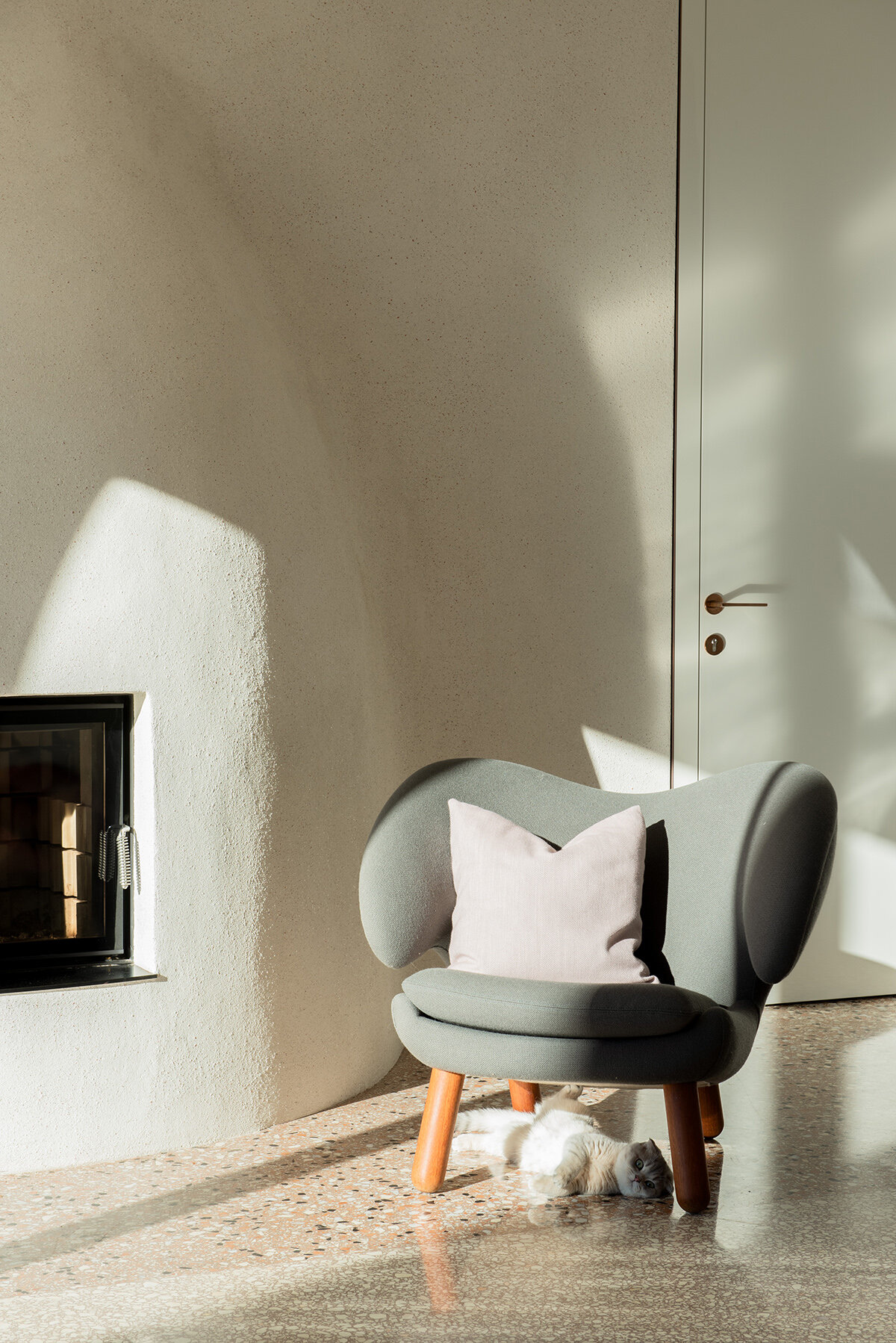
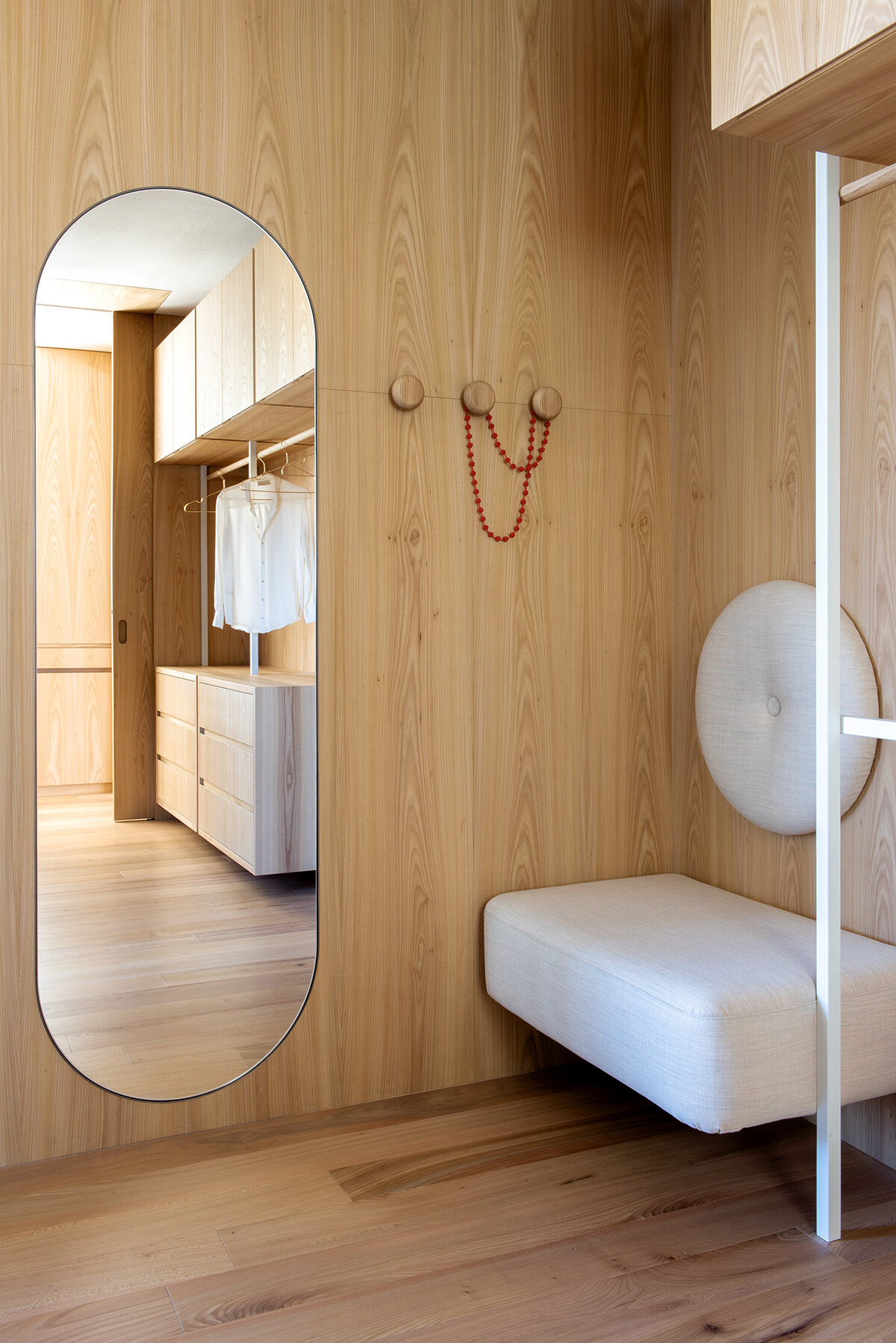
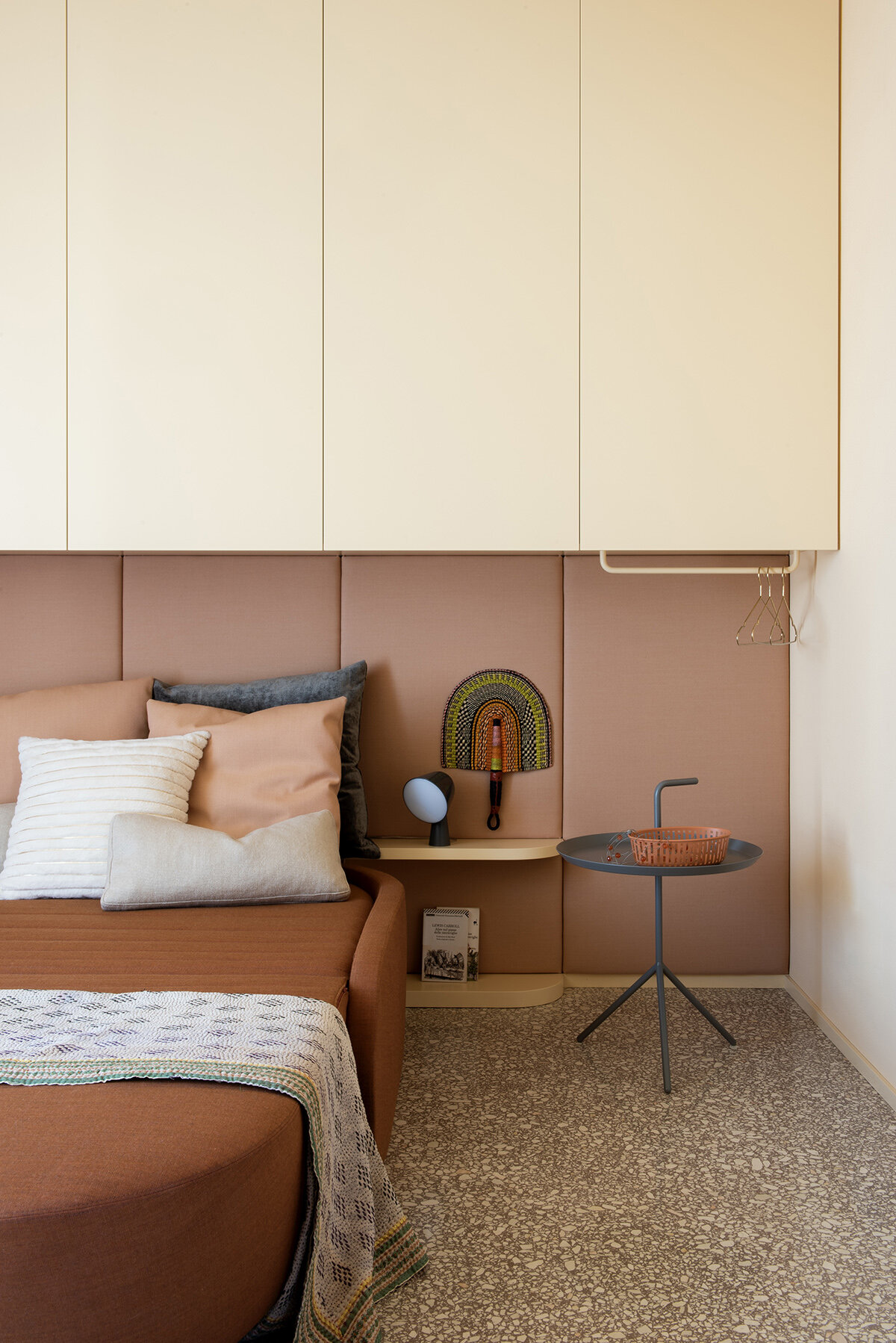
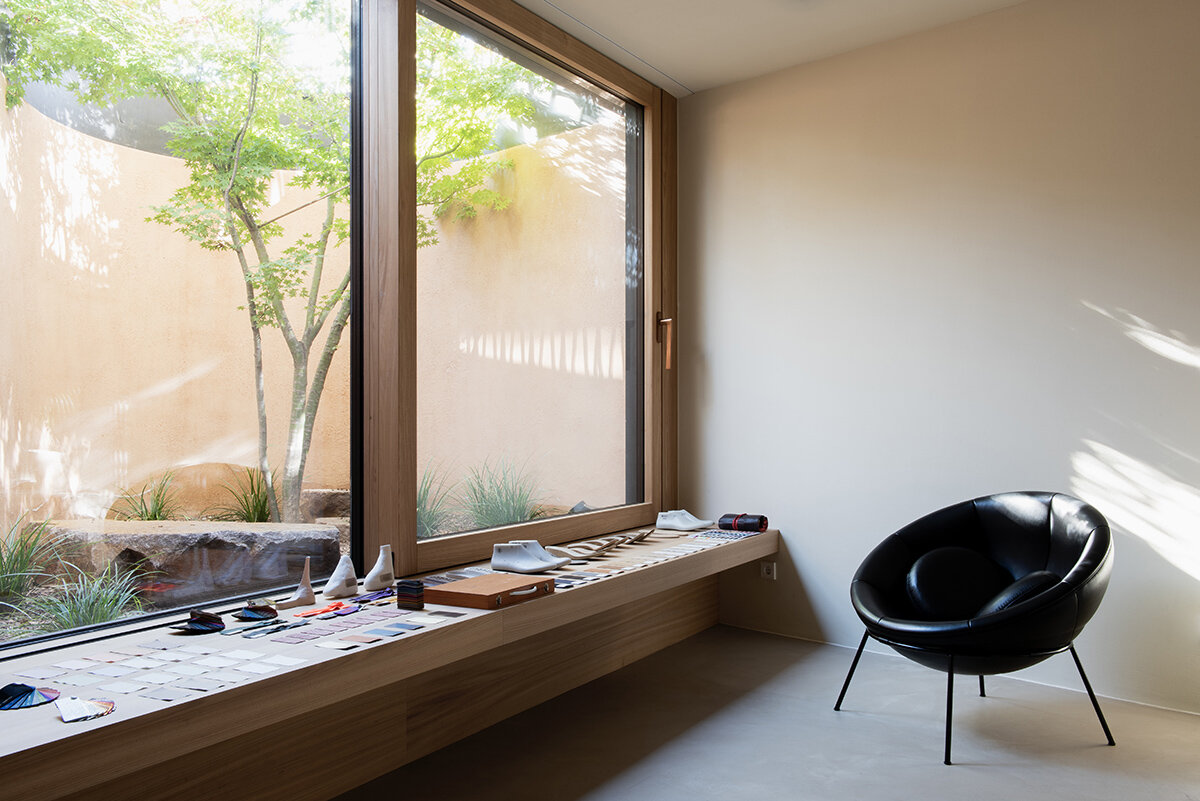
project info:
name: Visibilio House
architects: MoDusArchitects (Sandy Attia, Matteo Scagnol) | @modus.architects
design team: Sandy Attia, Matteo Scagnol, Martina Salmaso
design phase: 2017 —2018
construction: 2019 —2021
completion: 2022
location: Oltradige (Bolzano), South Tyrol, Italy
site area: 3.076 sqm
GFA: 1.090 sqm
structural and safety engineer: Ing. Rodolfo Senoner
mechanical and electrical engineer: P.I. Jochen Cristofoletti
lighting consultant: Lichtstudio Eisenkeil
domotics consultant: ProgPlan s.r.l.
klimahaus consultant: Ing. Giovanni Cutrone, Restartec s.r.l.
general contractor: Bernard Bau GmbH
site work and excavation: Pertoll H. & E. OHG
mechanical and plumbing installation: Heinzungsbau GmbH
electrical installation: Elektro Zuber KG
photography: ©Paolo Abate, ©Gustav Willeit
architecture in italy (561)
modus architects (7)
residential architecture and interiors (3981)
PRODUCT LIBRARY
a diverse digital database that acts as a valuable guide in gaining insight and information about a product directly from the manufacturer, and serves as a rich reference point in developing a project or scheme.
